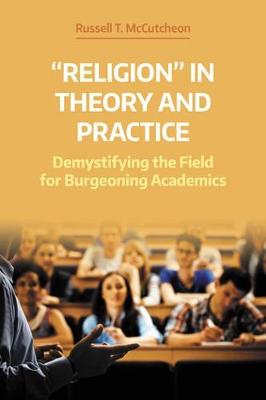NAASR Working Papers
1 total work
"Religion" in Theory and Practice follows on from McCutcheon's 2014 Equinox book Entanglements: Marking Place in the Field of Religion by offering both an overview of the current state of theory in the academic study of religion as well as examining a variety of practical sites where critical scholarship is implemented but also challenged. Although addressed to early career scholars-taking one reviewer of Entanglements seriously by adding to the meager genre of books directed toward these important readers-the volume should also be of interest to anyone curious about why many in the study of religion continue to assume that their object of study needs special attention.
The first section outlines McCutcheon's broader and more recent thoughts on the current state of the field (such as the claims, by some, that the field is now "post-theory") while the second section applies the first at a variety of discrete sites within the profession. These include how we approach teaching the introductory course, the work carried out in professional associations and conferences, the ongoing problem of contingent labor and what faculty might be able to do about it, the challenge of talking about what a theoretically-engaged scholar of religion actually does, and the varied audiences and readers who we can now try to reach with our work. Drawing on previously published, but revised, material for four of the ten chapters, the volume invites readers to step back from their own individual, specialized work so as to consider some of the wider structures in which the wider field exists and where all of our work is carried out.
The first section outlines McCutcheon's broader and more recent thoughts on the current state of the field (such as the claims, by some, that the field is now "post-theory") while the second section applies the first at a variety of discrete sites within the profession. These include how we approach teaching the introductory course, the work carried out in professional associations and conferences, the ongoing problem of contingent labor and what faculty might be able to do about it, the challenge of talking about what a theoretically-engaged scholar of religion actually does, and the varied audiences and readers who we can now try to reach with our work. Drawing on previously published, but revised, material for four of the ten chapters, the volume invites readers to step back from their own individual, specialized work so as to consider some of the wider structures in which the wider field exists and where all of our work is carried out.
